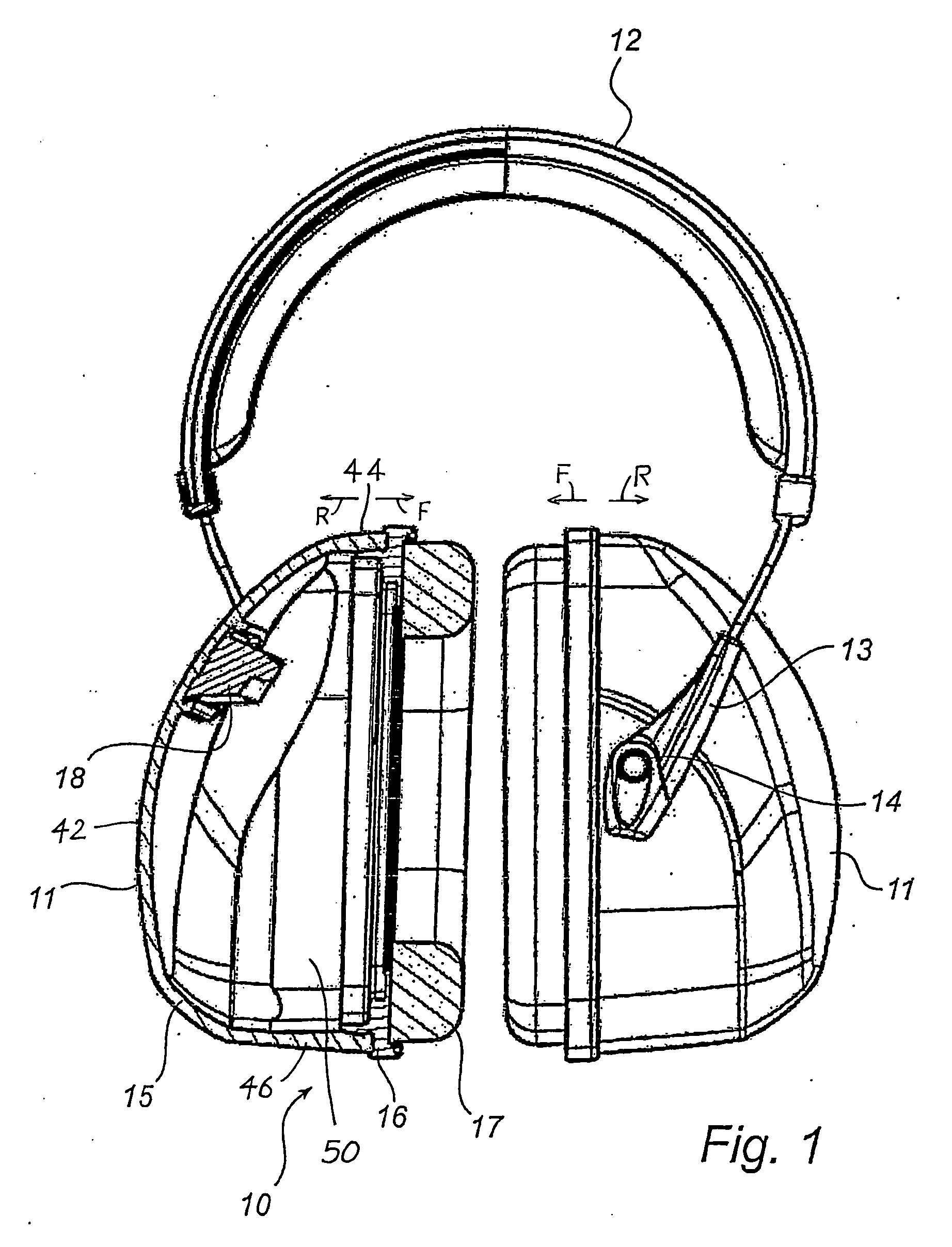Cap for use as hearing protection
a technology for hearing protection and caps, applied in the field of caps, can solve the problems of significant impairment of dampening of such noise, increased weight, and increased difficulty in adjusting, and achieve the effect of improving sound attenuation
- Summary
- Abstract
- Description
- Claims
- Application Information
AI Technical Summary
Benefits of technology
Problems solved by technology
Method used
Image
Examples
Embodiment Construction
[0039]FIG. 1 illustrates a hearing protector 10 comprising a headband 12 to abut against a user's crown and an embodiment of a cap 11 according to the invention to be mounted at each end of the headband, thus enclosing an external ear of the user. Each cap 11 comprises a cap shell 15, an intermediate bottom plate 16 and a sealing ring 17 to seal against the head of the user. A sound absorbing material (not shown) is preferably arranged between the cap shell 15 and the bottom plate 16, for instance in the form of a pad of foam plastic. Each cap is mounted at an end of the headband 12 by suspension from pins 14 on opposite sides of the cap shell 15, which pins are inserted into corresponding holes of holders 13 at each end of the headband 12, so that the caps 11 are pivotally suspended from the headband 12.
[0040] Each cap has front F and rear R ends that lie respectively closest and furthest from the person's ear. Each cap shell 15 has a closed rear wall 42, closed top and bottom wal...
PUM
 Login to View More
Login to View More Abstract
Description
Claims
Application Information
 Login to View More
Login to View More - R&D
- Intellectual Property
- Life Sciences
- Materials
- Tech Scout
- Unparalleled Data Quality
- Higher Quality Content
- 60% Fewer Hallucinations
Browse by: Latest US Patents, China's latest patents, Technical Efficacy Thesaurus, Application Domain, Technology Topic, Popular Technical Reports.
© 2025 PatSnap. All rights reserved.Legal|Privacy policy|Modern Slavery Act Transparency Statement|Sitemap|About US| Contact US: help@patsnap.com



